In this article, we will discuss five tips to help you jump and dive into the water like a master.
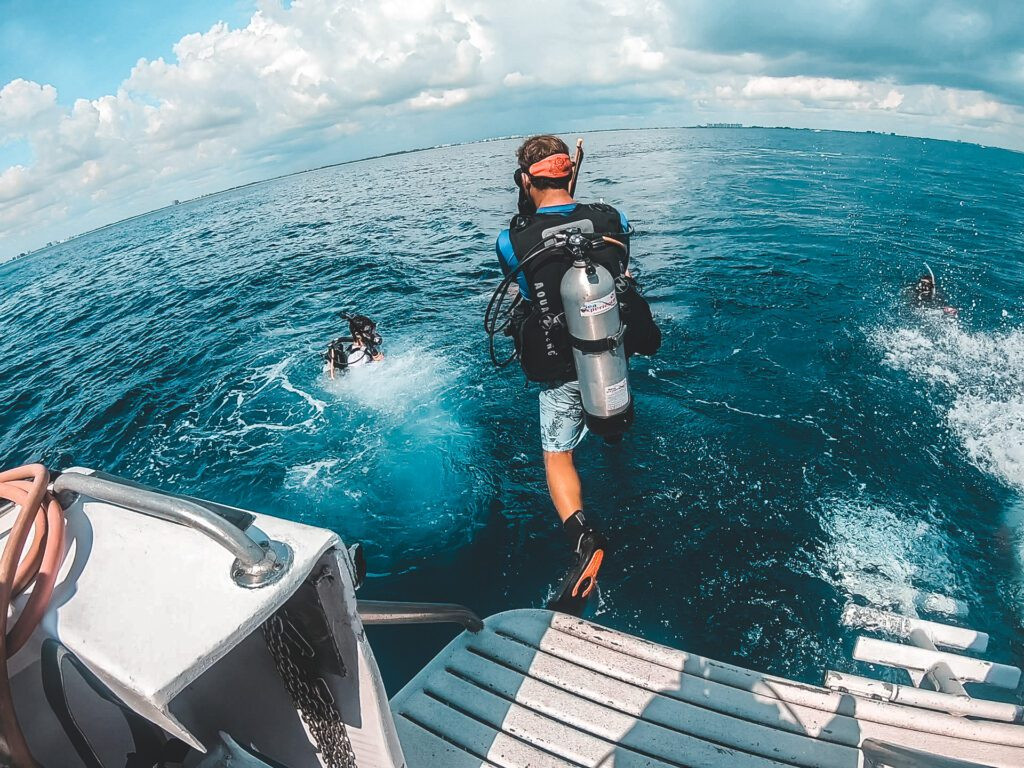
We will cover everything from assessing the dive site and conditions before jumping in, to properly securing and adjusting your dive gear for a safe entry.
We’ll also explore the technique and execution of the giant stride entry and the feet-first surface dive entry. Finally, we’ll discuss the best practices for staying safe while entering the water during a scuba dive.
By following these tips, you will not only enhance your diving skills, but also increase your confidence in the water. So, whether you are a novice or an experienced diver, read on to discover how to jump into the water like a pro.
Assess the Dive Site and Conditions Before Jumping In
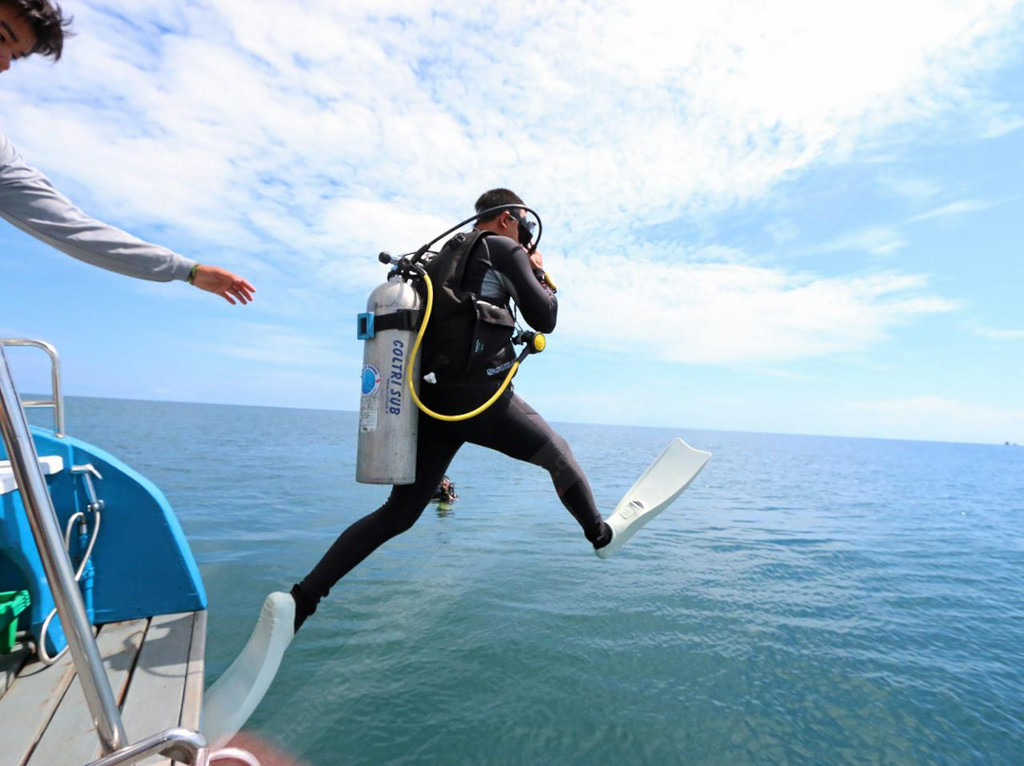
Assessing the dive site and conditions before jumping into the water is crucial for a safe and successful scuba dive. As a diver, you must be aware of the location’s unique features, including water temperature, visibility, currents, and marine life. Understanding these factors helps you determine if the conditions are favorable for diving and if you have the proper gear and experience to handle them.
Before jumping into the water, take a moment to observe the dive site from above. Look for any potential hazards such as rocks, reefs, or strong currents. Also, take note of the entry and exit points, so you can safely return to shore.
It’s also essential to consider your physical abilities and limitations. Are you experienced enough to handle the dive site’s conditions? Are you physically fit enough to manage the entry and exit points? If you’re unsure about your abilities, consider taking a refresher course or diving with a guide.
Overall, assessing the dive site and conditions helps you make informed decisions about the safety of the dive. If you’re not comfortable with the site or conditions, it’s better to err on the side of caution and postpone the dive for another day. By taking the time to assess the dive site and conditions, you can increase your chances of having a safe and enjoyable scuba diving experience.
Properly Secure and Adjust Dive Gear for Safe Entry
One of the most important aspects of entering the water during a scuba dive is properly securing and adjusting your dive gear. Failing to do so can lead to equipment malfunctions, injuries, or even accidents underwater. To enter the water like a master, it’s crucial to take the time to secure and adjust your gear before jumping in.
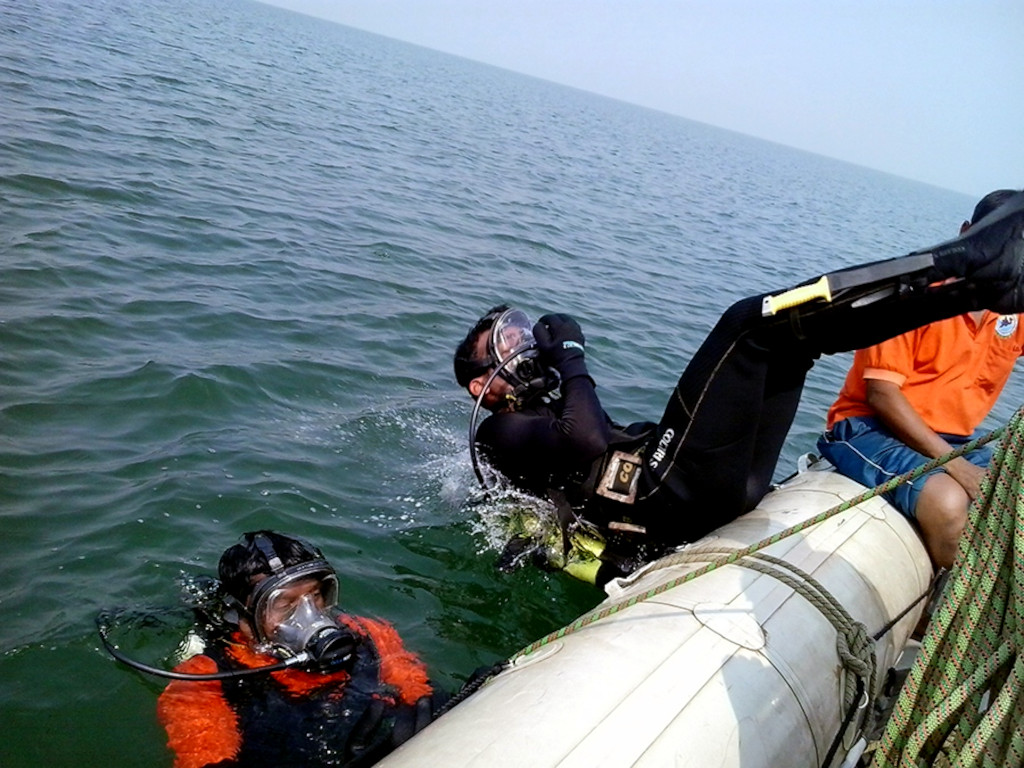
First and foremost, it’s essential to make sure that all straps, buckles, and connections on your dive gear are secure and tightened. This includes your BCD, weight system, tank straps, and any other equipment you may be carrying. Additionally, you should check that all hoses and valves are properly attached and in good condition.
Next, you’ll want to adjust your gear to ensure that it fits comfortably and snugly. This includes adjusting your BCD straps to fit your body, as well as making sure that your fins and mask are snug but not too tight. You may also need to adjust your regulator hoses or other equipment to ensure a comfortable fit.
Finally, it’s a good idea to double-check your gear before entering the water to make sure that everything is in place and functioning properly. By taking the time to properly secure and adjust your dive gear, you’ll be able to enter the water safely and with confidence, allowing you to focus on the amazing underwater world that awaits you.
Mastering the Giant Stride Entry: Technique and Execution
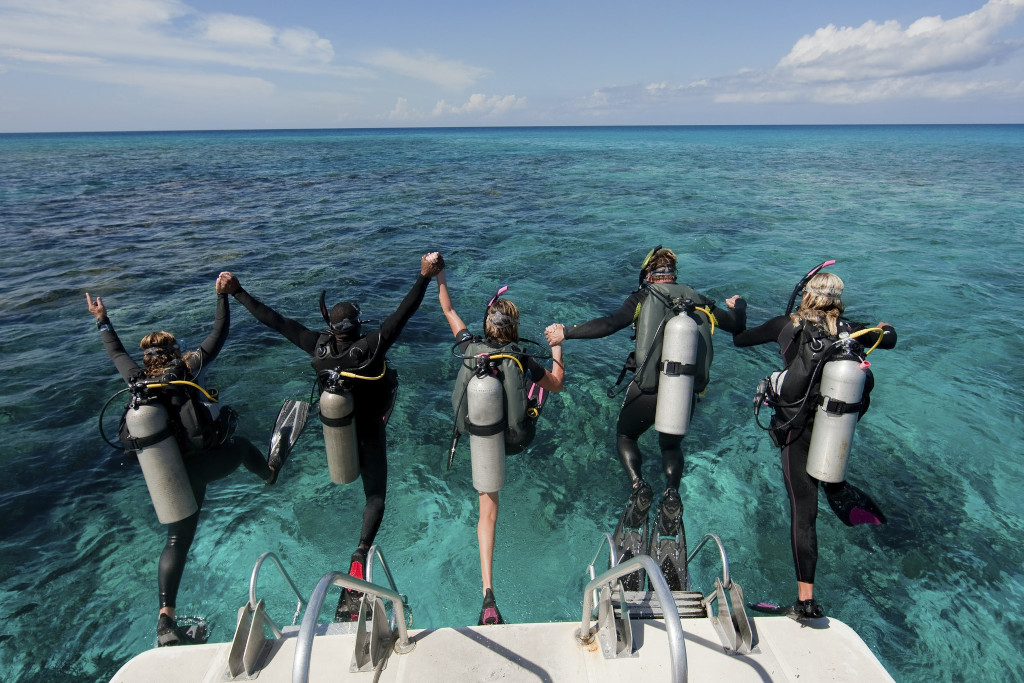
The giant stride entry is a popular and effective way to enter the water when scuba diving. It requires a bit of technique and coordination, but once mastered, it can be a safe and efficient way to get in the water. Here are some tips to help you master the giant stride entry:
Firstly, ensure that your gear is properly secured and adjusted. Make sure you fit your BCD correctly and fasten all the straps and buckles. This will help prevent any gear from coming loose or shifting during your entry.
Next, position yourself on the edge of the boat or platform, with your fins and mask in place. Take a deep breath and hold it.
Step forward with your dominant foot and simultaneously swing your other leg out and back behind you. This will create momentum as you step off the platform and into the water.
As you enter the water, keep your head and upper body vertical, and your arms extended out to your sides for balance. Your hands should be holding onto your mask and regulator to keep them secure.
Once you are in the water, take a moment to orient yourself and check your gear before beginning your descent. With practice, the giant stride entry can become a fluid and natural motion that helps you enter the water safely and efficiently.
Perfecting the Feet-First Surface Dive Entry:Timing is Everything
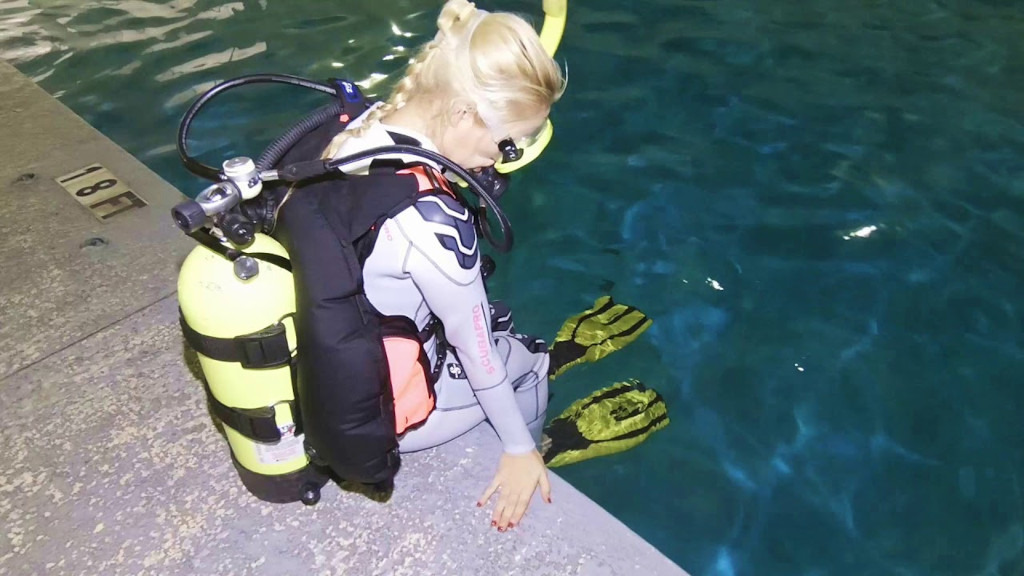
Timing is essential when it comes to the feet-first surface dive entry in scuba diving. This entry technique involves diving headfirst with your feet extended behind you, landing with your feet first, and then quickly submerging your body. Timing is critical because entering too early or too late can result in serious injuries or accidents.
To execute this entry correctly, divers must assess the dive site and conditions, ensure their gear is properly secured, and position themselves at the edge of the dive platform with their feet hanging off. When they are ready, divers must quickly push themselves off the platform, keeping their feet extended behind them and their body straight.
As the diver enters the water, they must pull their knees up to their chest and push down on their fins to propel themselves deeper into the water. This technique requires practice and coordination to perfect, but with time, divers can master this entry method.
It’s important to note that divers must never dive headfirst into shallow or unknown waters. This can cause severe injuries or even paralysis. Divers must always check the depth of the water and assess any potential obstacles before executing a feet-first surface dive entry. By mastering this technique and understanding the importance of timing, divers can safely and efficiently enter the water like a master.
Staying Safe: Best Practices for Entering the Water During a Scuba Dive
When entering the water during a scuba dive, safety should always be a top priority. Following best practices for entering the water can help to prevent accidents and injuries, ensuring a successful and enjoyable dive.
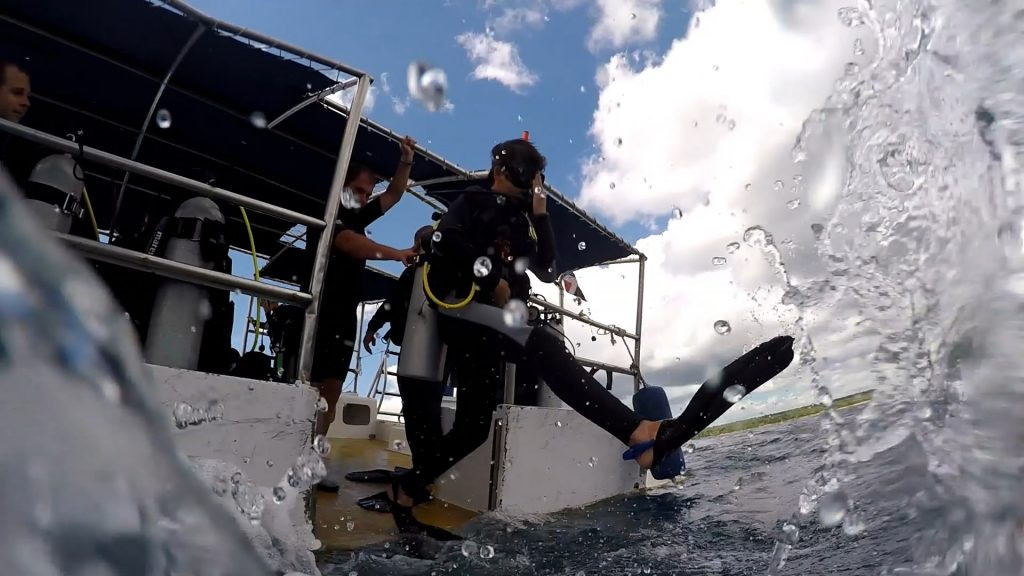
First and foremost, it’s essential to check the dive site and conditions before entering the water. This includes assessing the water temperature, currents, visibility, and any potential hazards, such as sharp rocks or strong waves. It’s important to only enter the water when conditions are safe and suitable for diving.
Before entering the water, it’s also crucial to properly secure and adjust your dive gear. This includes checking that your mask, fins, and regulator are properly fitted and functioning correctly. Proper gear adjustment can help to prevent gear malfunctions or accidents while entering the water.
When entering the water, mastering the giant stride technique and executing a feet-first surface dive can also increase safety. This includes properly positioning your body and gear and entering the water in a controlled and streamlined manner to avoid injuries or losing equipment.
Additionally, it’s important to maintain good posture and body position while entering the water to avoid back injuries. Keeping your back straight and core engaged can help to prevent strain or damage.
Overall, staying safe while entering the water during a scuba dive requires a combination of proper preparation, technique, and body awareness. By following best practices and taking the necessary precautions, divers can enter the water with confidence and minimize the risk of accidents or injuries.
Conclusion
Entering the water in scuba diving can be a thrilling experience, but it is important to do it safely and with proper technique. By assessing the dive site and conditions, properly securing and adjusting dive gear, mastering the giant stride entry, perfecting the feet-first surface dive entry, and following best practices for staying safe, you can enter the water like a master.
Remember that these tips are just the beginning and that practice makes perfect. Don’t be afraid to seek additional training and guidance from experienced divers to improve your skills even further. With the right mindset and preparation, you can have a safe and enjoyable diving experience every time you enter the water. So go ahead and take the plunge – with these tips, you’ll be diving like a pro in no time.
